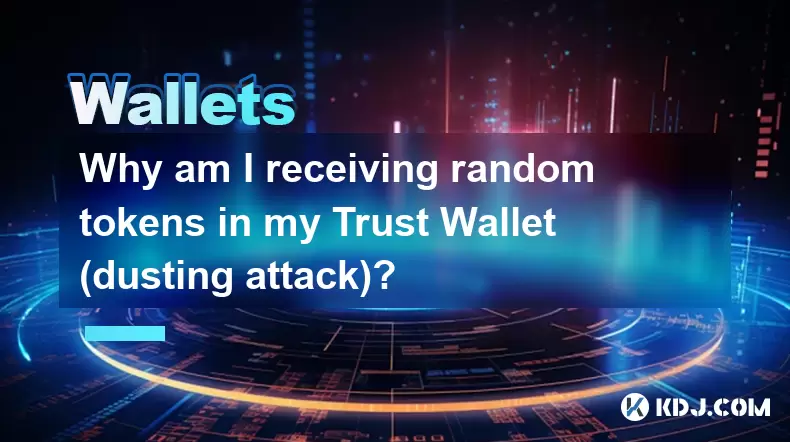-
 Bitcoin
Bitcoin $114200
0.00% -
 Ethereum
Ethereum $3637
0.56% -
 XRP
XRP $2.950
-2.01% -
 Tether USDt
Tether USDt $0.9999
0.02% -
 BNB
BNB $761.0
0.55% -
 Solana
Solana $164.1
-1.38% -
 USDC
USDC $0.9999
0.02% -
 TRON
TRON $0.3332
0.36% -
 Dogecoin
Dogecoin $0.2012
-0.52% -
 Cardano
Cardano $0.7261
-1.41% -
 Hyperliquid
Hyperliquid $37.62
-2.13% -
 Stellar
Stellar $0.3930
-2.65% -
 Sui
Sui $3.441
-0.16% -
 Bitcoin Cash
Bitcoin Cash $563.8
0.70% -
 Chainlink
Chainlink $16.50
0.09% -
 Hedera
Hedera $0.2424
-0.14% -
 Ethena USDe
Ethena USDe $1.001
0.01% -
 Avalanche
Avalanche $22.20
0.00% -
 Litecoin
Litecoin $118.0
-2.48% -
 UNUS SED LEO
UNUS SED LEO $8.991
0.12% -
 Toncoin
Toncoin $3.195
-3.87% -
 Shiba Inu
Shiba Inu $0.00001217
0.12% -
 Uniswap
Uniswap $9.674
-0.21% -
 Polkadot
Polkadot $3.633
1.00% -
 Monero
Monero $295.3
-0.82% -
 Dai
Dai $0.9999
0.00% -
 Bitget Token
Bitget Token $4.321
-0.41% -
 Cronos
Cronos $0.1392
0.73% -
 Pepe
Pepe $0.00001027
-0.89% -
 Aave
Aave $258.5
0.32%
What is Man-in-the-Middle Attack?
Interception of cryptocurrency transactions is a common method employed by malicious actors in man-in-the-middle attacks.
Feb 23, 2025 at 11:54 am

Key Points:
- Definition and Types of Man-in-the-Middle Attacks
- How Man-in-the-Middle Attacks Work in Cryptocurrency
- Detection and Prevention Measures for Man-in-the-Middle Attacks
- Frequently Asked Questions (FAQs)
Main Article:
Definition and Types of Man-in-the-Middle Attacks
A man-in-the-middle (MITM) attack is a type of cyberattack where an attacker intercepts communications between two parties and impersonates one or both to manipulate the exchange of information. In the context of cryptocurrency, MITM attacks aim to steal or tamper with cryptocurrency transactions, private keys, or other sensitive data.
There are several types of MITM attacks:
- DNS Spoofing: Redirecting a domain name's IP address to a malicious server controlled by the attacker.
- ARP Poisoning: Modifying ARP tables to redirect traffic through the attacker's machine.
- SSL Hijacking: Interfering with secure socket layer (SSL) connections to intercept and modify data in transit.
- Keylogging: Stealing a user's keystrokes to obtain sensitive information such as login credentials or private keys.
How Man-in-the-Middle Attacks Work in Cryptocurrency
MITM attacks in cryptocurrency environments can take various forms:
- Targeting Crypto Exchanges: Attackers can intercept communication between a user and a crypto exchange to steal API keys or manipulate transaction data.
- Phishing Attacks: Creating fake websites or emails that impersonate legitimate platforms to obtain login credentials or private keys.
- Intercepting Private Keys: Tampering with hardware wallets or infecting systems to access and steal private keys from cryptocurrency wallets.
Detection and Prevention Measures for Man-in-the-Middle Attacks
Early detection and effective prevention are crucial to mitigate MITM attacks:
- Check and Validate Web Addresses: Scrutinize URLs for any irregularities, such as different URL structures or spelling mistakes.
- Enable Multi-Factor Authentication: Implement 2FA for cryptocurrency exchanges and wallets to prevent unauthorized access even if login credentials are compromised.
- Use Encrypted Communication: Encrypt all communication channels, including email and website servers, using TLS or HTTPS encryption.
- Install Anti-Malware Software: Regularly scan devices for malicious software that could facilitate MITM attacks.
FAQs
Q: What are the consequences of a successful MITM attack?
A: Consequences may include stolen funds, loss of sensitive information, compromised accounts, and disrupted cryptocurrency transactions.
Q: How can I protect myself from MITM attacks?
A: Practice vigilance by checking website addresses, implementing 2FA, using encryption, and installing anti-malware software.
Q: What measures can cryptocurrency exchanges take to prevent MITM attacks?
A: Exchanges should implement strong encryption protocols, audit their systems regularly for vulnerabilities, and educate users about MITM prevention practices.
Disclaimer:info@kdj.com
The information provided is not trading advice. kdj.com does not assume any responsibility for any investments made based on the information provided in this article. Cryptocurrencies are highly volatile and it is highly recommended that you invest with caution after thorough research!
If you believe that the content used on this website infringes your copyright, please contact us immediately (info@kdj.com) and we will delete it promptly.
- Ethereum, Transaction Volumes, and SEC Staking: Navigating the Regulatory Landscape
- 2025-08-06 22:30:13
- Crypto, Tokens, and Metrics: Navigating the New Frontier
- 2025-08-06 23:09:22
- Crypto Market Buzz: PROVE Surges as Coinbase, Binance List Token
- 2025-08-06 22:30:13
- BlockSack Who? Base Network and Layer 2s Shake Up the Crypto Scene
- 2025-08-06 23:10:13
- Brazil, Bitcoin, Hearing Date: Is Brazil About to Embrace Bitcoin?
- 2025-08-06 20:30:38
- Stabull DEX on Base Chain: A New Era for Stablecoins?
- 2025-08-06 20:47:53
Related knowledge

How to add TRC20 token to Trust Wallet?
Aug 04,2025 at 11:35am
Understanding TRC20 and Trust Wallet CompatibilityTrust Wallet is a widely used cryptocurrency wallet that supports multiple blockchain networks, incl...

How to securely store my Trust Wallet recovery phrase?
Aug 06,2025 at 07:14am
Understanding the Importance of Your Trust Wallet Recovery PhraseYour Trust Wallet recovery phrase, also known as a seed phrase or mnemonic phrase, is...

How to change the currency in Trust Wallet?
Aug 06,2025 at 07:14pm
Understanding Currency Display in Trust WalletTrust Wallet does not allow users to change the base currency used for valuation in the same way traditi...

Why am I receiving random tokens in my Trust Wallet (dusting attack)?
Aug 06,2025 at 10:57am
What Is a Dusting Attack in the Cryptocurrency Space?A dusting attack occurs when malicious actors send minuscule amounts of cryptocurrency—often frac...

What is a watch-only wallet in Trust Wallet?
Aug 02,2025 at 03:36am
Understanding the Concept of a Watch-Only WalletA watch-only wallet in Trust Wallet allows users to monitor a cryptocurrency address without having ac...

Why can't I connect my Trust Wallet to a DApp?
Aug 04,2025 at 12:00pm
Understanding DApp Connectivity and Trust WalletConnecting your Trust Wallet to a decentralized application (DApp) is a common process in the cryptocu...

How to add TRC20 token to Trust Wallet?
Aug 04,2025 at 11:35am
Understanding TRC20 and Trust Wallet CompatibilityTrust Wallet is a widely used cryptocurrency wallet that supports multiple blockchain networks, incl...

How to securely store my Trust Wallet recovery phrase?
Aug 06,2025 at 07:14am
Understanding the Importance of Your Trust Wallet Recovery PhraseYour Trust Wallet recovery phrase, also known as a seed phrase or mnemonic phrase, is...

How to change the currency in Trust Wallet?
Aug 06,2025 at 07:14pm
Understanding Currency Display in Trust WalletTrust Wallet does not allow users to change the base currency used for valuation in the same way traditi...

Why am I receiving random tokens in my Trust Wallet (dusting attack)?
Aug 06,2025 at 10:57am
What Is a Dusting Attack in the Cryptocurrency Space?A dusting attack occurs when malicious actors send minuscule amounts of cryptocurrency—often frac...

What is a watch-only wallet in Trust Wallet?
Aug 02,2025 at 03:36am
Understanding the Concept of a Watch-Only WalletA watch-only wallet in Trust Wallet allows users to monitor a cryptocurrency address without having ac...

Why can't I connect my Trust Wallet to a DApp?
Aug 04,2025 at 12:00pm
Understanding DApp Connectivity and Trust WalletConnecting your Trust Wallet to a decentralized application (DApp) is a common process in the cryptocu...
See all articles

























































































